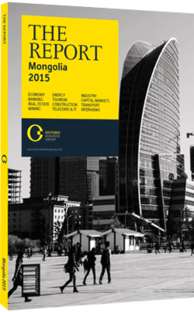New law being discussed for managing Mongolia's debt
While public spending has been key to maintaining growth in 2012 and 2013, its funding has relied on a ramp-up in foreign-currency (FC) debt. Constrained by the Fiscal Stability Law (FSL), which caps public debt at 40% of GDP, the government subsequently channelled expansionary quasi-fiscal spending through the Development Bank of Mongolia (DBM).
Rising Leverage
The Ministry of Economic Development (MED) drove the government’s external borrowing from its establishment in August 2012 until it was merged into the Ministry of Finance in late 2014. The FSL’s limits of 2% of GDP on budget deficits and 40% of GDP on gross debt constrain fiscal spending. However, debt-raising and quasi-fiscal spending by the sovereign-guaranteed DBM swiftly emerged as a means of circumventing these caps.
The budget’s structural deficit narrowed from 7.4% of GDP in 2012 to 1.4% in 2013, yet the consolidated fiscal picture proved to be far more expansionary, with an aggregate deficit rising from 10.9% of GDP to 11.1% in 2013, according to Asian Development Bank (ADB) figures. While partly caused by shortfalls on optimistic revenue assumptions, the broadening deficit was financed primarily through FC debt. Sovereign debt surged from 35% of GDP in 2010 to 67% by June 2014, according to the IMF, with a sizeable 48.3% of GDP in FC debt.
Public Debt Mix
Mongolia had conducted private placements offshore before, such as the aborted eurobond issue in 2009, but only started floating sovereign bonds from March 2012, when DBM issued $580m in five-year bonds at 5.75% that were 10-times oversubscribed. The MED followed up with a $1.5bn sovereign-issue in two equally oversubscribed tranches. In 2012 alone commercial debt rose to 33% of consolidated public debt, while domestic debt fell from 28% to 23%, multilateral debt from 40% to 19% and bilateral debt from 24% to 19%.
Despite the initial success, the two benchmark issues have seen their yields rise as investors began charging premiums for holding Mongolian debt. DBM has thus resorted to smaller issues and private placements. In terms of spending, DBM invested MNT1.7trn ($1bn) in 120 projects between 2012 and mid-2014, according to the World Bank.
Although investment of bond proceeds accounted for 9.6% of GDP in 2013, 60% went to non-commercially-viable projects.
“Some of the DBM bond proceeds were channelled to social projects like roads, which don’t offer a direct financial pay back and should thus be accounted for on-budget,” O. Chuluunbat, former deputy minister of economic development, told OBG. “Other commercially-viable projects can remain off-balance-sheet since they could repay the bonds without featuring in the budget.”
Debt Management
Inaccurate revenue projections have compounded fiscal pressure, with a shortfall of 7.9% in 2013 and 10% in the first half of 2014, even if the structural budget deficit remained a manageable 0.5% as of June 2014, according to the World Bank. While revenues grew 7.7% y-o-y in the first half of the year, on-budget spending rose 22%, driven by a 50% rise in capital expenditure. The revised 2014 budget cut spending in the short term, yet the government still sees high rates of investment as an economic priority. Although provisioning for bond repayments will start in the 2015 budget, consolidation of fiscal spending on-budget will only come in the medium term.
In January 2015, the Mongolian parliament voted to raise the country’s debt ceiling to 58.3% via an amendment to the FSL. Under the revised law, the debt ceiling will be gradually reduced to 55% in 2016 and 50% in 2017, before dropping back to the 40% limit included initially within the FSL. While the move did provide the government with some breathing room and establish goals for bringing down the total public debt, it also raised concerns about the government’s commitment to adhering to its targets.
You have reached the limit of premium articles you can view for free.
Choose from the options below to purchase print or digital editions of our Reports. You can also purchase a website subscription giving you unlimited access to all of our Reports online for 12 months.
If you have already purchased this Report or have a website subscription, please login to continue.

